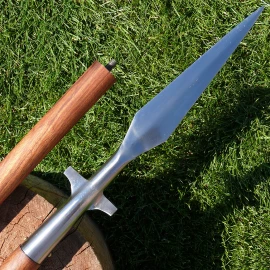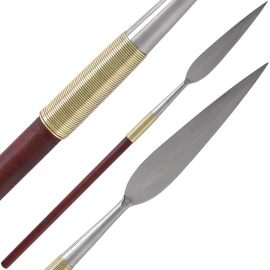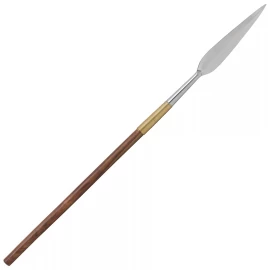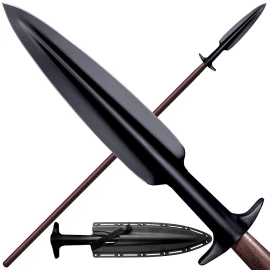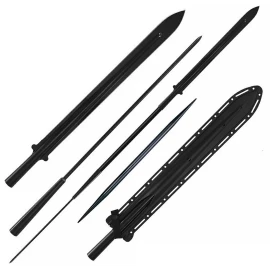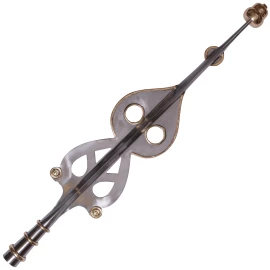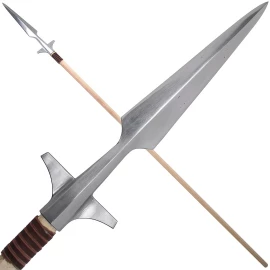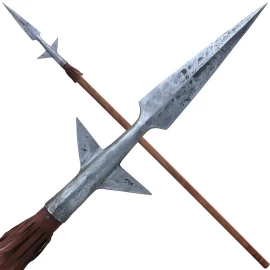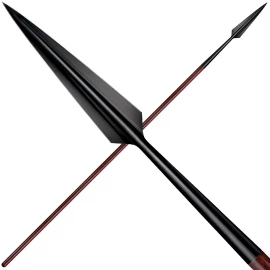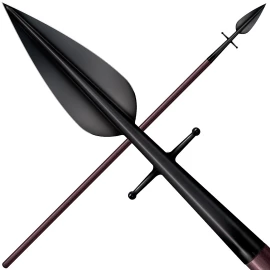Lances
The lance is a pole weapon or spear designed to be used by a mounted warrior or cavalry soldier (lancer). During the periods of classical and medieval warfare, it evolved into being the leading weapon in cavalry charges, and was unsuited for throwing or for repeated thrusting, unlike similar weapons of the spear/javelin/pike family typically used by infantry. Lances were often equipped with a vamplate – a small circular plate to prevent the hand sliding up the shaft upon impact. It is best known as a military and sporting weapon carried by European knights. As a secondary weapon, lancers of the medieval period also bore swords, axes or maces for hand-to-hand combat, since the lance was often a one-use-per-engagement weapon; assuming the lance survived the initial impact intact, it was (depending on the lance) usually too long, heavy and slow to be effective against opponents in a battle melee.
Narrow your Results
Lance in the Middle Ages
The Byzantine cavalry used lances almost exclusively, often in mixed lancer and mounted archer formations. The Byzantines used lance both overarm and underarm, couched.
The best known usage of military lances was that of the full-gallop closed-ranks charge of a group of knights with underarm-couched lances, against lines of infantry, archery regiments, defensive embankments, and opposition cavalry. Two variants on the couched lance charge developed, the French method, en haie, with lancers in a double line and the German method, with lancers drawn up in a deeper formation which was often wedge-shaped. It is commonly believed that this became the dominant European cavalry tactic in the 11th century after the development of the cantle saddle and stirrups, and of rowel spurs (which enabled better control of the mount). Cavalry thus outfitted and deployed had a tremendous collective force in their charge, and could shatter most contemporary infantry lines.
Because of the extreme stopping power of a thrusting spear, it quickly became a popular weapon of infantry in the Late Middle Ages. These eventually led to the rise of the longest type of spears, the pike. This adaptation of the cavalry lance to infantry use was largely tasked with stopping lance-armed cavalry charges. During the 15th, 16th and 17th centuries, these weapons, both mounted and unmounted, were so effective that lancers and pikemen not only became a staple of every Western army, but also became highly sought-after mercenaries.
In Europe, a jousting lance was a variation of the knight's lance which was modified from its original war design. In jousting, the lance tips would usually be blunt, often spread out like a cup or furniture foot, to provide a wider impact surface designed to unseat the opposing rider without spearing him through. The centre of the shaft of such lances could be designed to be hollow, in order for it to break on impact, as a further safeguard against impalement. They were often at least 4m long, and had hand guards built into the lance, often tapering for a considerable portion of the weapon's length.

